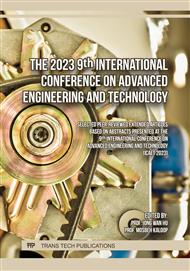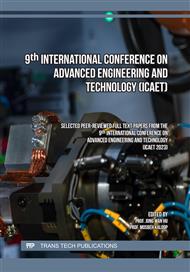p.3
p.11
p.19
p.27
p.33
p.45
p.53
Statical Numerical Analysis and Material Optimization of Arthropod-Inspired Hexapod Robots for Disaster Rescue Applications
Abstract:
The development of arthropod-inspired robotic architecture, modeled after the limbs of insects and other animals, has enabled robots to behave more flexibly and adaptively in different environments. Among these designs, hexapod robots have gained significant attention due to their potential use in disaster rescue scenarios, providing vital support for lifesaving and damage control in emergency situations. This study addresses the numerical analysis of a hexapod robot specifically tailored for use in disaster areas, with a particular focus on the crucial aspect of material optimization. Hexapod robots, equipped with articulated legs that mimic insect-like movements, have shown remarkable success in exploration tasks, especially in navigating hard-to-reach places. The main body of the robot was designed using durable yet lightweight materials to optimize load-bearing capacity for the required equipment and rescue tools. A thorough static numerical analysis was performed to ensure the structural integrity and efficiency of the robot. Finite element simulation programs were used for the static numerical analysis, allowing evaluation of the stresses and deformations to which the robot would be subjected under various loading conditions. The selection of materials played a critical role in improving the robot's performance and survivability during disaster operations. Various materials, including composites and advanced alloys, were tested, and analyzed for their mechanical properties and suitability for harsh conditions. In particular, the resistance of the robot to the impact of a falling cubic reinforced concrete element was investigated by simulating a stone collapse. The results of this study shed light on the influence of materials on the robot's ability to cope with unpredictable and challenging scenarios, ultimately contributing to the development of more robust and reliable Hexapod robots for disaster operations. The results of this research contribute significantly to ongoing advances in robotics technology for disaster operations. By leveraging the unique characteristics of arthropod-inspired Hexapod robots and optimizing their material composition, this study highlights the potential of these mobile devices to revolutionize rescue operations in challenging and hazardous environments, ultimately saving lives and minimizing the impact of disasters.
Info:
Periodical:
Pages:
33-41
Citation:
Online since:
February 2024
Keywords:
Price:
Сopyright:
© 2024 Trans Tech Publications Ltd. All Rights Reserved
Share:
Citation:



